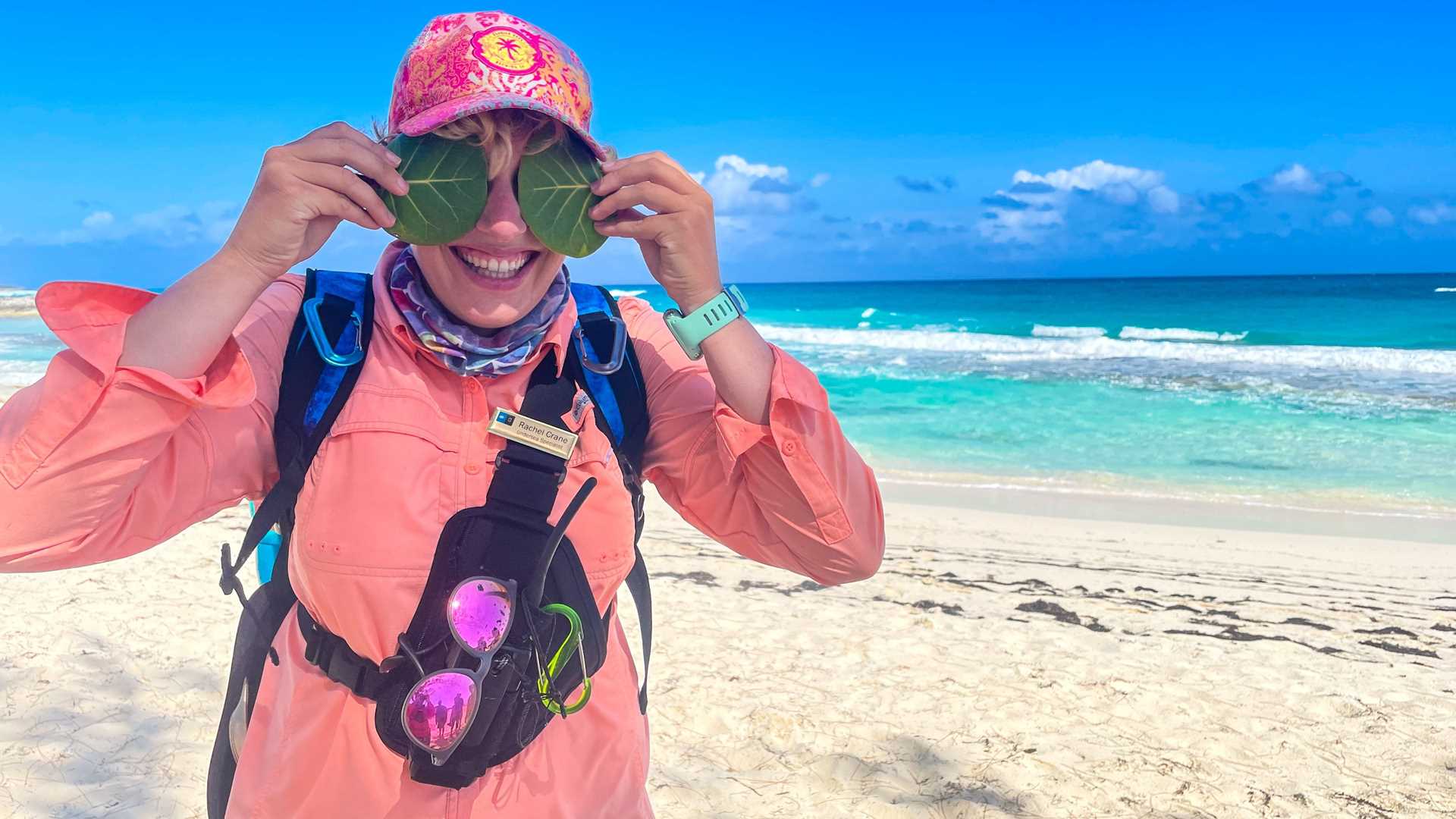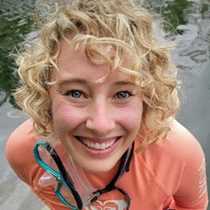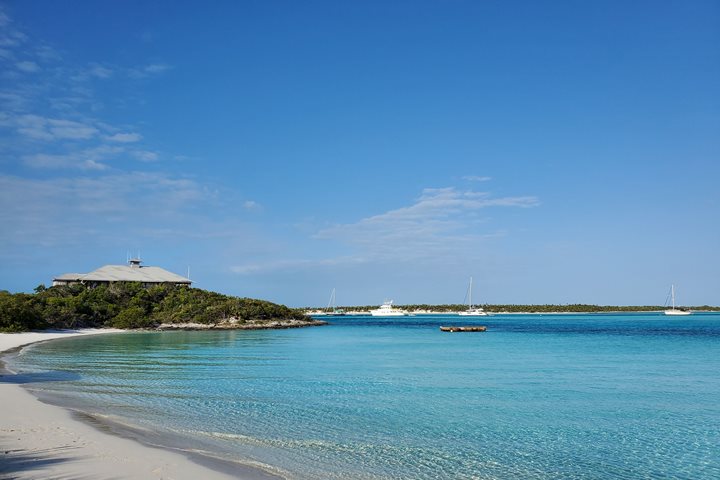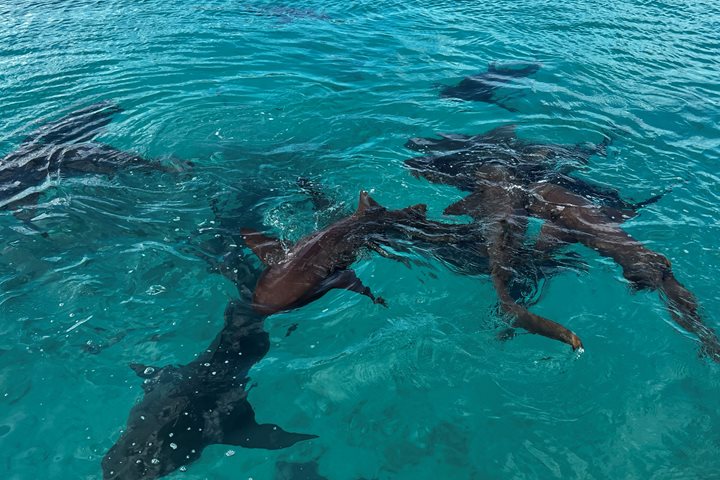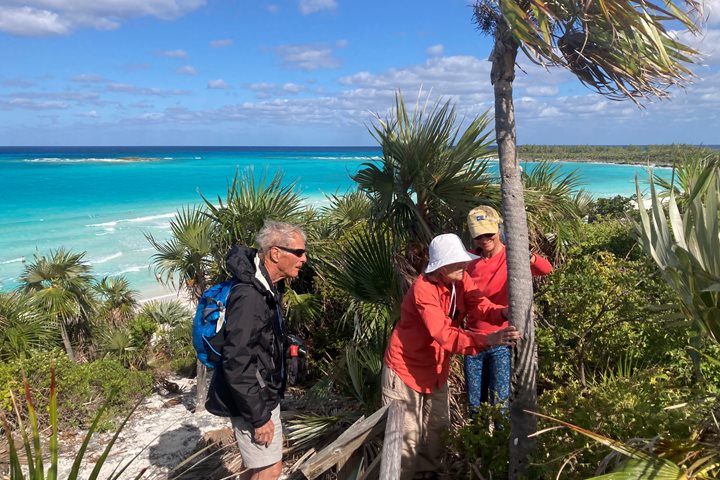This morning, we started our first exploration of the Bahamas by going ashore at Stocking Island. Stocking Island has more trails than any other island in the Bahamas, so we were excited to start discovering all the new landscapes and critters. We split off into groups that wanted to take a long walk along the beach, a shorter walk along the beach, or a nice chill beach hang. Our walks took us through the really interesting foliage that makes up the forests on the island.
An amazing diversity of plants is found in the Bahamas. Many of the plants live in extremely adverse conditions, surviving in low nutrient and high wind environments. Normally these plants are found in textbook successional stages, but in this particular instance, the plants broke the rules. It is possible to find red mangroves alongside buttonwoods in mostly dry areas. It’s a very unique environment to walk through as we made our way from the protected side of Stocking Island to the exposed, Atlantic side of the island.
As we enjoyed our long walk along the beach with white sand between our toes and numerous shades of blue water crashing alongside us, we found ourselves in front of some of the most incredible “rocks” in the world. If you didn’t know any better, you would just enjoy the beautiful Bahama blue waves crashing on these rocks along the shore. But these humble rocks are not rocks at all. They are the oldest living fossils in the world. The fossils are called stromatolites, and they are created by the hard excretion of cyanobacteria, an ancient photosynthetic bacteria. The stromatolites in the Bahamas are over 2,000 years old. Stromatolites can only be found in two places on the planet: Australia and the Bahamas. It was really amazing to have an appreciation for these unassuming “rocks” and to know how special their existence is in this world.
We topped off our walks with a lovely swim in the ocean, the perfect way to end our day of land exploration.

